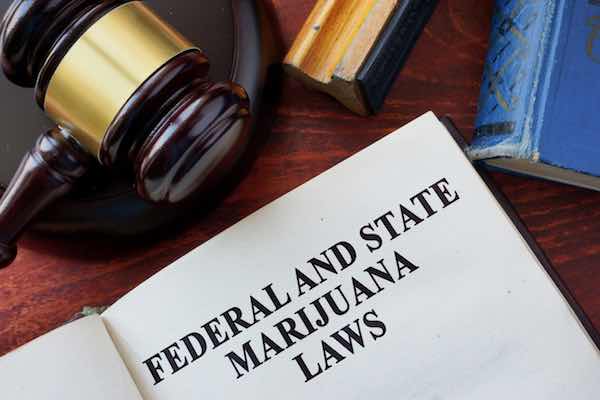Recently introduced legislation would prevent current or past marijuana use from disqualifying individuals from the opportunity to become federal employees or be granted security clearances.
The Cannabis Users Restoration of Eligibility (CURE) Act (H.R. 5040) was introduced by Congressman Jamie Raskin (D-MD). It has two co-sponsors as of the time of this writing, one of whom is a Republican (Congresswoman Nancy Mace (R-SC)).
Individuals who were denied federal job opportunities in the past because of marijuana use would have the chance to have those denials reviewed.
The legislation also applies to security clearances. Individuals who currently use marijuana or have done so in the past could not be denied a security clearance on that basis and could have any past denials reviewed.
Raskin says that the bill is needed because of the preponderance of medical and recreational cannabis use laws in the country today. He said:
Every year, qualified and dedicated individuals seeking to serve our country are unable to secure federal jobs and security clearances because the federal government has not caught up with the widely established legal use of medical and recreational cannabis. I am proud to partner with my friend Representative Mace to introduce the bipartisan CURE Act that will eliminate the draconian, failed and obsolete marijuana policies that prevent talented individuals from becoming honorable public servants in their own government.
Where is Marijuana Legal?
According to Forbes, marijuana is fully legal in 24 states and legal for medical use in 13 states as of August 1, 2023.
However, marijuana is still illegal at the federal level under the Controlled Substances Act (CSA) of 1970. This law places all regulated substances under one of five schedules. Marijuana is a Schedule I drug under this law.
What Does the Drug Enforcement Administration Say About Marijuana?
According to the Drug Enforcement Administration (DEA), Schedule I drugs have the following characteristics:
- The drug or other substance has a high potential for abuse.
- The drug or other substance has no currently accepted medical use in treatment in the United States.
- There is a lack of accepted safety for use of the drug or other substance under medical supervision.
- Examples of Schedule I substances include heroin, gamma hydroxybutyric acid (GHB), lysergic acid diethylamide (LSD), marijuana, and methaqualone.
DEA also writes this about drugs that are regulated under the CSA:
If a drug does not have a potential for abuse, it cannot be controlled. Although the term “potential for abuse” is not defined in the CSA, there is much discussion of the term in the legislative history of the Act. The following items are indicators that a drug or other substance has a potential for abuse:
- There is evidence that individuals are taking the drug or other substance in amounts sufficient to create a hazard to their health or to the safety of other individuals or to the community.
- There is significant diversion of the drug or other substance from legitimate drug channels.
- Individuals are taking the drug or other substance on their own initiative rather than on the basis of medical advice from a practitioner.
- The drug is a new drug so related in its action to a drug or other substance already listed as having a potential for abuse to make it likely that the drug will have the same potential for abuse as such drugs, thus making it reasonable to assume that there may be significant diversions from legitimate channels, significant use contrary to or without medical advice, or that it has a substantial capability of creating hazards to the health of the user or to the safety of the community. Of course, evidence of actual abuse of a substance is indicative that a drug has a potential for abuse.
Regarding its effects, DEA says this about marijuana:
The effect of marijuana on perception and coordination are responsible for serious impairments in learning, associative processes, and psychomotor behavior (driving abilities).
Long term, regular use can lead to physical dependence and withdrawal following discontinuation, as well as psychological addiction or dependence.
What About Medical Use?
DEA obviously thinks marijuana is a dangerous drug based on its description. However, the agency notes that Schedule I drugs are ones that do not currently have an accepted medical use which seems to contradict state laws since several states allow the use of the drug for medical reasons.
On this topic, DEA states:
Although some states within the United States have allowed the use of marijuana for medicinal purpose, it is the U.S. Food and Drug Administration that has the federal authority to approve drugs for medicinal use in the U.S. To date, the FDA has not approved a marketing application for any marijuana product for any clinical indication. Consistent therewith, the FDA and DEA have concluded that marijuana has no federally approved medical use for treatment in the U.S. and thus it remains as a Schedule I controlled substance under federal law.





